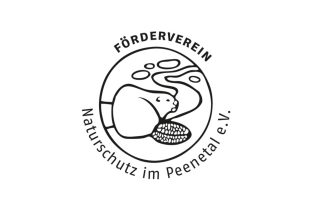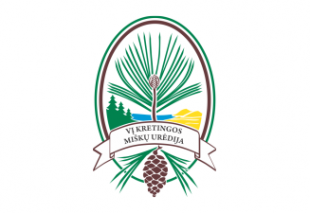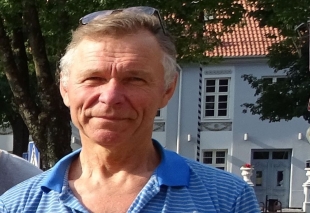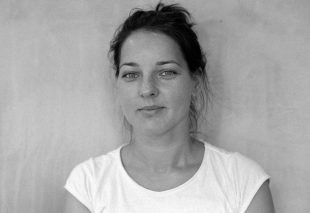
Project partners
The project team is made of organizations and experts with experience in aquatic warbler conservation.


Polish Society for Protection of Birds (OTOP)

Nature Conservation in the Peene Valley association

Zuvintas Biosphere Reserve Directorate

Kretinga Regional Unit of Lithuanian State Forest Enterprise

Scientific-Practical Center of Natural Resources of the Belarusian National Academy of Sciences

Žymantas Morkvėnas
Zymantas Morkvenas is a director of environmental NGO in Lithuania and the manager of this project. He has been leading few conservation initiatives for aquatic warbler conservation nationally and internationally from 2010. Current Z. Morkvenas’ research focus on agricultural practice impact to biodiversity, development of socio-economic mechanisms of maintaining biodiversity in rural landscapes. He was leading the team to create new agri-environmental measure to support maintenance of alluvial grasslands and fen mires for conservation of aquatic warbler and is active member of International Aquatic Warbler Conservation Team. Moreover, Z. Morkvenas is devoted ornithologist and nature photographer.
“Every time I hear the song of aquatic warbler, I feel excitement and joy. I think aquatic warbler conservation is my life-time project.”

Dr. Aleksandr Kozulin
Aleksander Kozulin devoted most of his scientific research and practical work trying to save this species. Together with Martin Flade he discovered most of the Aquatic Warbler populations and initiated habitat restoration projects in Belarus. He is also a member of International Aquatic Warbler Conservation Team.
“Conservation of the Aquatic warbler and the marshes it inhabits has become the main goal of my research in the last 20 years. I feel responsible for the fate of this species in Belarus and it is very important that the responsibility for this species is shared by many scientists, environmentalists and the local people.”

Arūnas Pranaitis
Arūnas Pranaitis has been working in the field of nature for more than 30 years and has a lot of experience in restoring and managing habitats. Much of his research and practical work relates to the protection of birds and wetlands. A. Pranaitis is an enthusiastic ornithologist and Director of the Zuvintas Biosphere Reserve, the oldest protected area in Lithuania, where the first nests of the Aquatic Warbler habitats were discovered. In 2017 he received the Victor Berg’s prize for his successful long-term commitment and work in the field of nature, .
“I just love these singers (Aquatic Warblers). I want to see the magnitude of their abundance 30 years ago in Žvintos grasslands. “

Dr. Žydrūnas Preikša
Žydrūnas Preikša is an ornithologist and scientist who has practically devoted his entire professional career to the protection of the Warblers. He is in charge of keeping records of nests in Lithuania and is constantly participating in various bird conservation and research projects. He also belongs to the International Protection Group for Bird Breeds.
“I was fascinated by Aquatic warbler’s mysteriousness since it is one of the least investigated birds and conservation of Aquatic warbler as a dweller of very specific habitats helps to protect entire ecosystem with many other species”.

Rita Grinienė
Rita is responsible for coordinating all the communication activities of the project, bringing together volunteers. She has been working on the protection of Aquatic Warblers and nature conservation for five years. She has a Masters degree in Public Relations.
“For me the most delicate meeting with the aquatic warbler was the first. As the sun was setting next to the Nemunas delta mire, I heard the warbler’s song for the first time. The sun-lit grasses softly swayed, nature was calm and ready to sleep, but the aquatic warbler kept singing her survival song. It was magical.”

Akvilė Galeckaitė
Akvilė joined the project team in February 2024 and works as environmental specialist. She completed bachelor’s studies in Ecology at Vilnius University and master’s studies in Nature Management at Copenhagen University. Before she worked as environmental specialist and quality assurance specialist as well as volunteered during Aquatic Warbler translocation in Zuvintas in 2019.

Petras Lengvinas
In the project, Petras is responsible for coordinating activities in the Nemunas delta, maintaining relations with the local government and farmers.
“Everything in the world is balanced and set in order, but when a person intervenes in certain areas, this order is violated, so it is necessary to protect nature. There must be enough space under the sun for everyone. If you have violated or destroyed something, you must take care of it, preserve it, and restore it.”

Rita Jonkuvienė
Rita have gathered a lot of experience in project administrating, so she helps the project manager to coordinate administrative – financial activities.
“Aquatic warbler just remarkably expanded the perception that everyone, no matter how small and little – everyone is valuable in this world and has their own role and impact on others. I’m glad that the protection of this little bird that is happening for several years in our organisation, is helping me (administrative – management sector person) to better understand natural processes, to perceive the links between human activities, consequences and changes, also it helps to raise the questions, whose answers leads to wider self, as a part of a nature, understanding, i.e. to look to the environment with “eyes wide open” and to see deeper and more than before. I love these little birds and I am very proud of our nature conservation team.”

dr. Domas Uogintas
In this project Domas is responsible for project monitorings.

Giedre Janusauskiene
In this project Giedre is responsible for administrative and various tasks implementation.

Sigita Grauzinyte
Sigita is responsible for project finances – planning, supervision, control and preparation as well as submission of financial statements to the responsible authorities. Sigita has a degree in finance aand has many years of experience in project management.

Ruta Rosson

Egle Viciuviene

Jakovich Vitalij Aleksandrovich
Republican Center of Ecology and Landscape management, Minsk. Zoologist of the mini-zoo. Ornithologist.
“I’m glad that the project, which is aimed to preserving the endangered species – the Aquatic warbler – has united a large number of people from different countries, for whom the rescue of this little bird is interesting, important and significant, and everyone contributes to this great cause, and that I am part of this. Joint work, with mutual understanding and support for all project participants, is of great importance for the recovery of this easily vulnerable species.”

